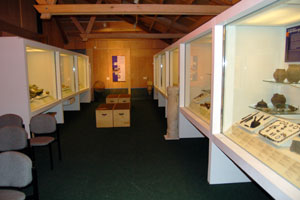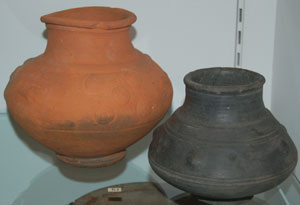
Before the Romans withdrew from Britain in 410 AD, they had already recruited Anglo-Saxon soldiers into the army in Britain. These pots represent production under Roman rule, but made in a Saxon style. These are from the late 4th or early 5th century. The hollow bosses are typical of Saxon potters. One pot from 360 or 370 AD was made at Much Hadham in Hertfordshire, but found at Icklingham. It also has a running leopard motif which is typically Roman. The other pot was found at Timworth. It has been suggested that this style of pottery was made to cater for Saxon mercenaries in the pay of the Roman army in late 4th century Britain. If so, it represents a Saxon presence locally well before 410 AD. |
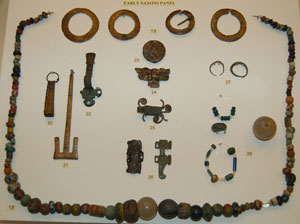
Early Anglo-Saxon jewellery buried with various female bodies. The necklace of glass and crystal beads was made up from graves in Mitchell's Hill at Icklingham. The beads were imported from the Rhineland. Four annular brooches at the top are also from Mitchell's Hill, as is the girdle hanger. A couple of items are from Lakenheath. |
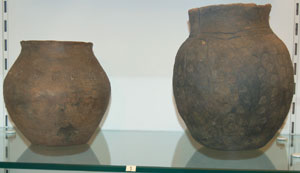
Early Anglo-Saxon funeral urns from West Stow. These would be used to hold the cremated remains of dead anglo-saxons. The patterned urns may have been made as funery goods, but old cooking pots were also thought to have been pressed into service in poorer households. |
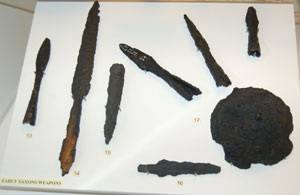
Early Anglo-Saxon weaponry found in graves.
13 Icklingham
14-16 From Westgarth Gardens cemetery. 14 is a javelin with some remaining wood shaft. 15 is a ferrule used as a counterweight on the end of a javelin. 16 is a knife blade.
17 Fornham St Martin. A shield boss and three spears. |
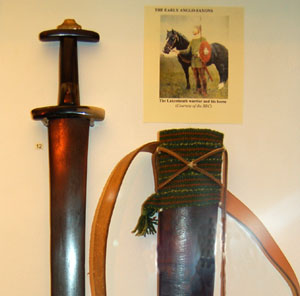
Modern replica of a pattern welded sword found in the Horse and Warrior grave at Lakenheath Airbase in 1997. |
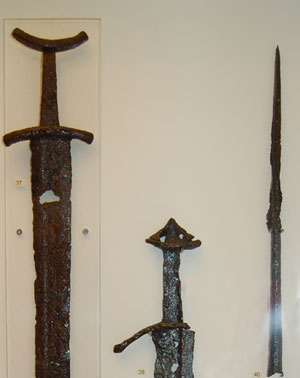
The Late Saxon period began in the 7th and 8th centuries. After 650 AD the pagan Saxons began to convert to Christianity. The 8th century brought the re-introduction of the potter's wheel, the use of kilns and the use of money.
The weapons shown here are late Saxon, from the 9th and 10th centuries.
37 from Ixworth
38 Somewhere in Suffolk
39 Hockwold
40 Kings Road, Bury St Edmunds |
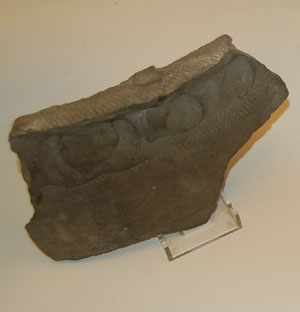
This pottery has become known as Thetfordware because it was first discovered there. However, it transpired that it was widely produced in Ipswich and Norwich as well as elsewhere in East Anglia in the late 9th to 11th centuries. |
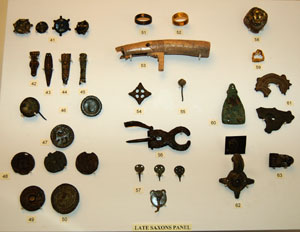
Various late Saxon objects. |


